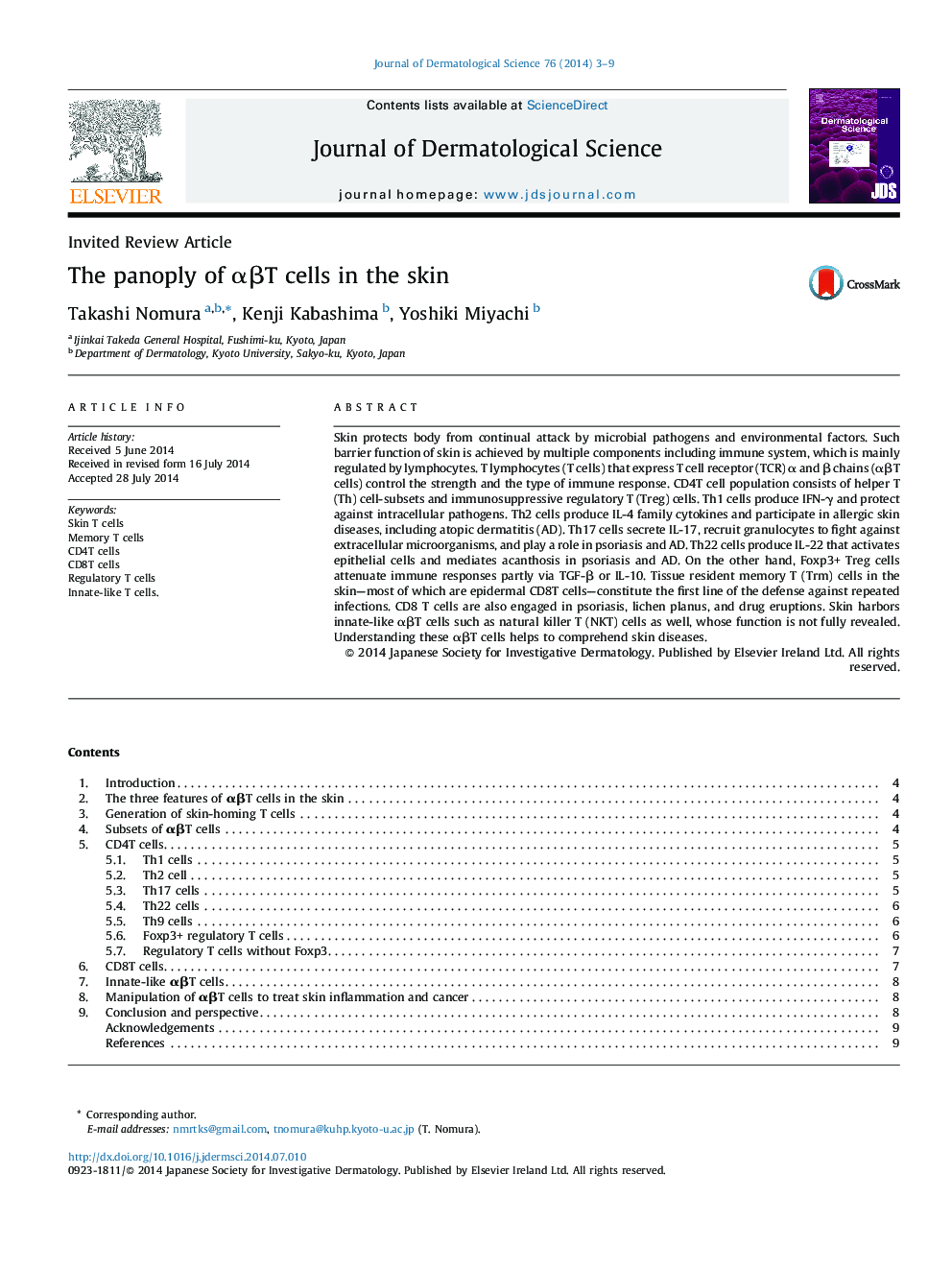| Article ID | Journal | Published Year | Pages | File Type |
|---|---|---|---|---|
| 6074280 | Journal of Dermatological Science | 2014 | 7 Pages |
â¢Most skin αβT cells are skin-tropic resident memory cells.â¢CD8 T cells reside in epidermis.â¢CD4 T cells and regulatory T cells reside in dermis.â¢Features of skin αβT cell-subsets are reviewed.â¢Harnessing immune system is becoming a promising approach to treat melanoma.
Skin protects body from continual attack by microbial pathogens and environmental factors. Such barrier function of skin is achieved by multiple components including immune system, which is mainly regulated by lymphocytes. T lymphocytes (T cells) that express T cell receptor (TCR) α and β chains (αβT cells) control the strength and the type of immune response. CD4T cell population consists of helper T (Th) cell-subsets and immunosuppressive regulatory T (Treg) cells. Th1 cells produce IFN-γ and protect against intracellular pathogens. Th2 cells produce IL-4 family cytokines and participate in allergic skin diseases, including atopic dermatitis (AD). Th17 cells secrete IL-17, recruit granulocytes to fight against extracellular microorganisms, and play a role in psoriasis and AD. Th22 cells produce IL-22 that activates epithelial cells and mediates acanthosis in psoriasis and AD. On the other hand, Foxp3+ Treg cells attenuate immune responses partly via TGF-β or IL-10. Tissue resident memory T (Trm) cells in the skin-most of which are epidermal CD8T cells-constitute the first line of the defense against repeated infections. CD8 T cells are also engaged in psoriasis, lichen planus, and drug eruptions. Skin harbors innate-like αβT cells such as natural killer T (NKT) cells as well, whose function is not fully revealed. Understanding these αβT cells helps to comprehend skin diseases.
